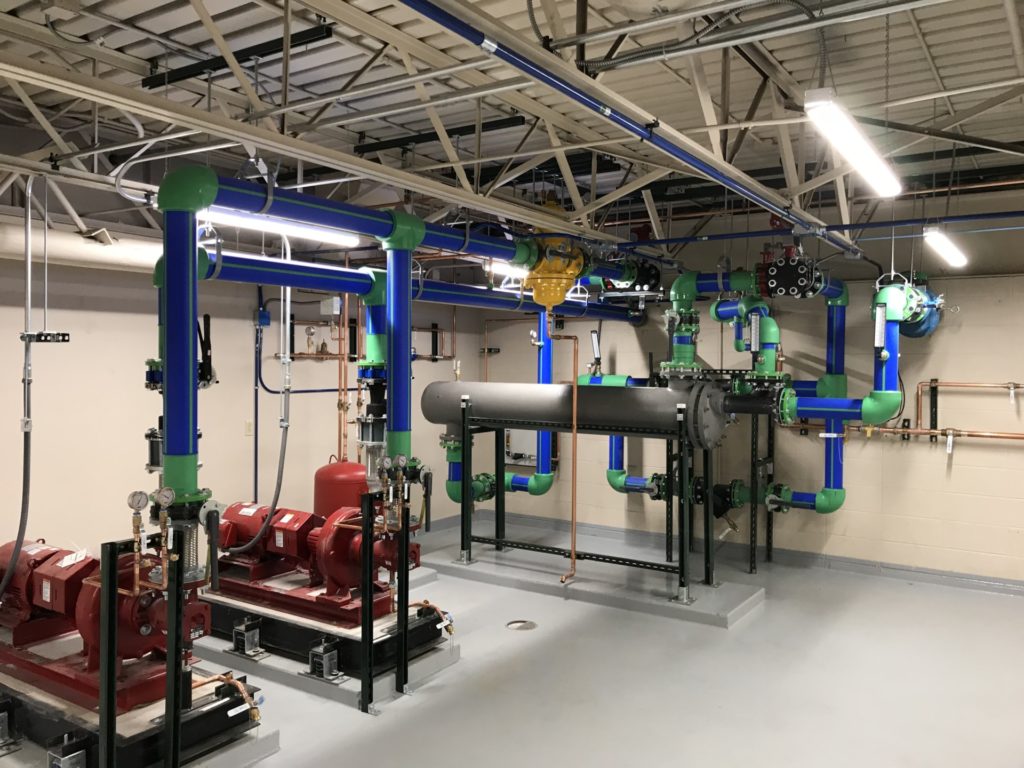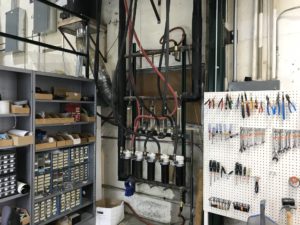
The new closed-loop process equipment room in the Engineering Research Center. Photo courtesy of Harrison Bridge
If a catastrophic asteroid were on a collision course with Earth, John Williams’ research could literally help save the world. But, testing the electric propulsion devices that could be used to knock a potentially apocalyptic event away from the planet comes at a cost.
“There’s a huge amount of power that goes into creating the environment that we need inside the vacuum chambers to test the thrusters,” the mechanical engineering professor said. “Sometimes it feels like I’m walking, pulling 500 train containers full of coal, and everything is just carbon behind me.
“All of the power that we use to run the vacuum chambers around the clock needs to be dissipated by cooling water, and now, due to the closed loop, that can be done without wasting water.”
Williams’ lab – along with multiple others in the Engineering Research Center on Colorado State University’s Foothills Campus — is cooled by water, but thanks to Facilities Management, it will have much less of an environmental footprint than it did before thanks to a new closed-loop system.

In a state where water is an increasingly valuable resource, even the smallest bit of conservation can make a big difference over time. In the case of the ERC, that conservation has been to the tune of 20,000 gallons of water per day – a savings that is equivalent to covering an acre of land with 20 feet of liquid over the course of a year.
“We felt it was really important, especially because we’re in a drought, and we don’t need to use more resources than necessary,” said Carol Dollard, an energy engineer for Facilities Management who has been integral in sustainability projects across campus.
The ERC was using upwards of 80,000 gallons for water per day to cool labs that involved everything from Williams’ vacuum chambers to plasma equipment to powerful lasers.
“The lasers have equipment that have to be cooled with water,” said Harrison Bridge, a project manager for Facilities Management. “Things move around when they heat up, so the accuracy of the laser is dependent on them keeping the laser cooled to a certain temperature.”
Liquid cooling is more efficient than air cooling since it allows more control over location, according to Bridge.
Users were previously tied into the city-treated water system, and once water was finished cooling equipment, the lab used to let it flow down the drain. Now, it continues to circulate through a closed-loop system that uses a heat exchanger to dissipate heat and cool the water, which has amounted to a savings of tens of thousands of gallons per day.
“We’ve taken off a huge burden on the water treatment plant,” Dollard said.
The project began two years ago when a lab manager approached Bridge and said the equipment was not functioning at an optimum level. Bridge worked to update the system and install the closed-loop. The COVID-19 pandemic delayed the engineering and construction process, but the water conservation project is nearly finished and has been delivering results for months.
“We are so appreciative of the new water cooling system, and not just because our conscience is eased,” Williams said.